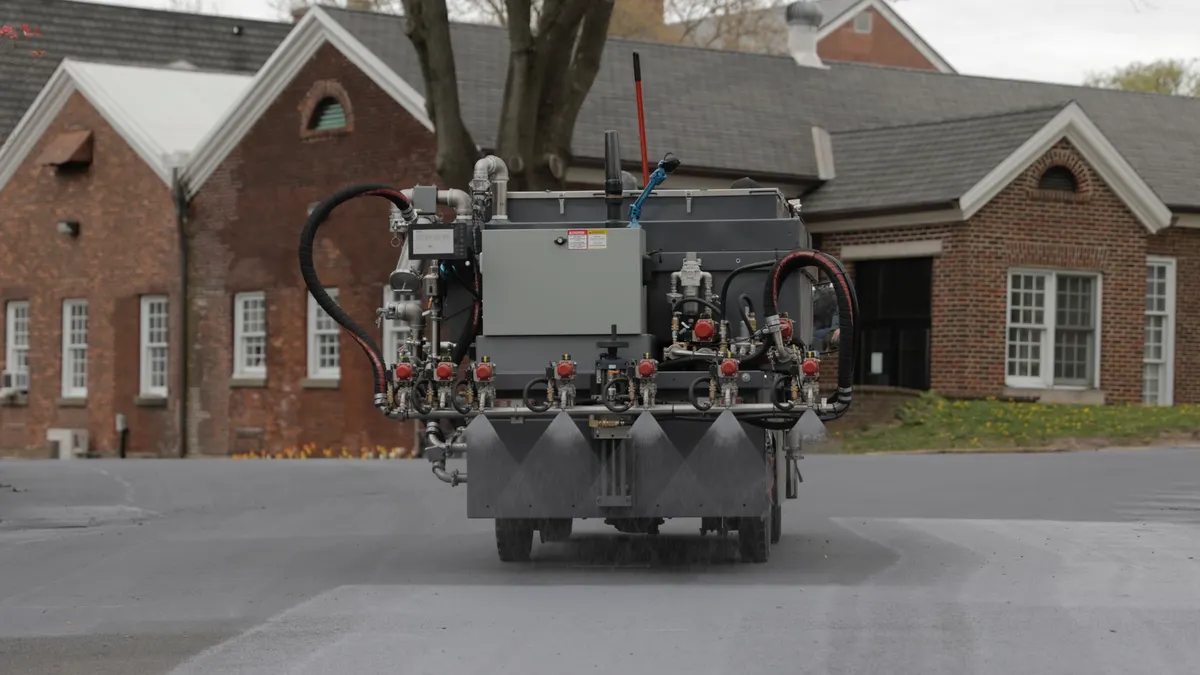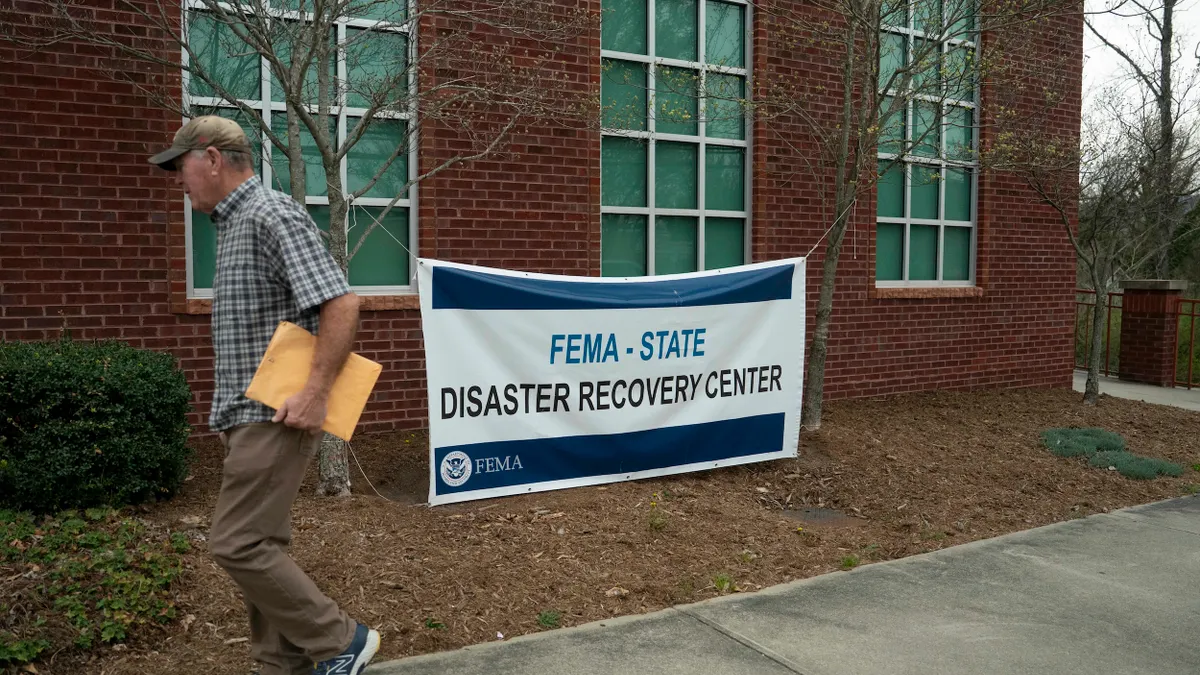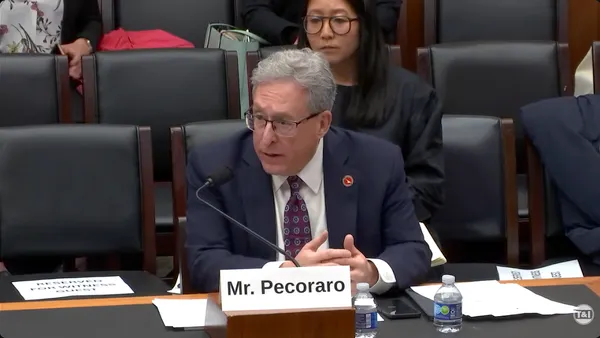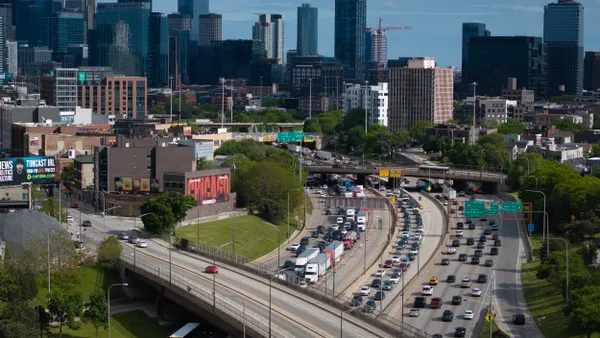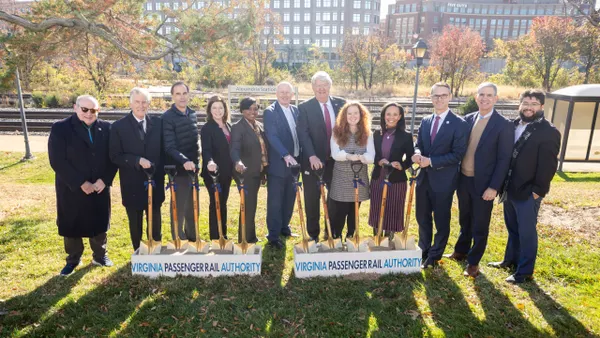The American infrastructure maintenance crisis is well-documented, and yet a key factor of the crisis is rarely discussed. Although we invest more and more money in maintaining our local streets, the pavement condition doesn’t get better. At the same time, as we observe meaningful return on investment in the form of new airport terminals and bridges, the streets in our own neighborhoods never seem to get better. This decline in the average road surface condition affects communities large and small, even cities that are making major investments of taxpayer money in road maintenance.
A managed retreat of our streets
I’ve spent the past 13 years in leadership roles at street maintenance agencies in Los Angeles and Seattle. In both cities, we had the benefit of revenue streams dedicated to road surface maintenance. Even with significantly more resources than many localities, the best we could do with existing materials and methods was a “managed retreat” of a slowly declining residential street network.
American taxpayers invest approximately $4B every year in materials used for the maintenance of residential streets in our cities and towns[1]. There’s an uncomfortable truth sitting right out in the open: the most prevalent road maintenance techniques are not delivering the expected return on investment. Yet there’s hope: an emerging strategy to pavement preservation featuring new materials and application approaches that can revitalize our local roadways, help reduce life cycle costs, and potentially improve neighborhood quality of life.
Based on my experience, here’s the conventional wisdom of “pavement preservation” for local asphalt streets: a city should resurface an asphalt street every 15-20 years and then let the brand-new riding surface sit exposed to the elements for five years, after which time an asphalt-based coating such as slurry seal should be applied. When that asphalt-based coating has eroded over the next 3-5 years, the conventional wisdom is to apply another layer of that same coating. Coat, Coat, Coat. Repave. Repeat.
A new approach to maintaining streets
The new approach to local pavement maintenance is to be smart from the start, immediately applying a maintenance coating to newly-paved local streets to protect the roadway from water, heat, and ultraviolet rays. Using innovative materials, application methods, and a life-cycle mindset, we can indeed improve the quality and longevity of our neighborhood streets.
During my career in public works and transportation agencies, I’ve been asking uncomfortable questions about the road maintenance paradigm. Why hasn’t there been any innovation in the materials and application methods over the past fifty years? If water, UV rays, and heat degrade the binder of our asphalt roadways, why do we wait five years after repaving to apply a protective coating? If a protective coating is needed, why is it made of the same materials as the roadway itself, offering no complementary protective properties?
The new road ahead
From 2015 to 2019, I led a pilot project at the Los Angeles Bureau of Street Services (“StreetsLA”) to test new types of pavement coatings in the lab, on parking lots, and then on neighborhood streets. By 2021, we had forged a partnership with GAF Roads to install their solar-reflective coating on residential streets in neighborhoods across Los Angeles. Our innovation journey together led us to an unexpected and powerful conclusion: it's possible to dramatically extend the life of a local road while benefiting the local community.[2]
A seal coating made from an engineered binder rather than asphalt can be installed on a newly-paved local road right from the start, protecting this critical and valuable asset from day 1. Applied with GAF’s innovative and nimble battery-electric vehicle, the GAF Roads EFA epoxy-fortified acrylic seal reflects heat and seals the local roadway from water. To help the coating perform at its best and minimize waste, the material is only applied under digital control at a precise thickness using GAF’s innovative application equipment, avoiding the irregular, gloopy application we see in asphalt-based coatings.
The 20 million square feet of GAF Roads EFA seal applied on Los Angeles residential streets from 2021-2022 now serves as a living laboratory for the performance of this innovative approach. After five years of exposure to real-world weather and wear, GAF’s solution is protecting the underlying local roadway better than conventional methods and is easier and less expensive to maintain[2]. Since less material is eroding into the environment, and the coating continues to look great, it can help improve “curb appeal” for folks living in the neighborhood. The future of pavement preservation has arrived.
Greg Spotts is currently partnered with GAF to help educate public agencies and has served as a municipal government transportation executive including as the former Chief Sustainability Officer and Assistant Director, StreetsLA at the City of Los Angeles and most recently as the Director of the Seattle Department of Transportation.
[1] IBIS World - Road & Highway Construction (2023)
[2] Based on third-party lab testing data and GAF modeling validated by independent critical reviewers. Details on assumptions and projections found within our Maintenance Impact Report on GAF.com/roads

